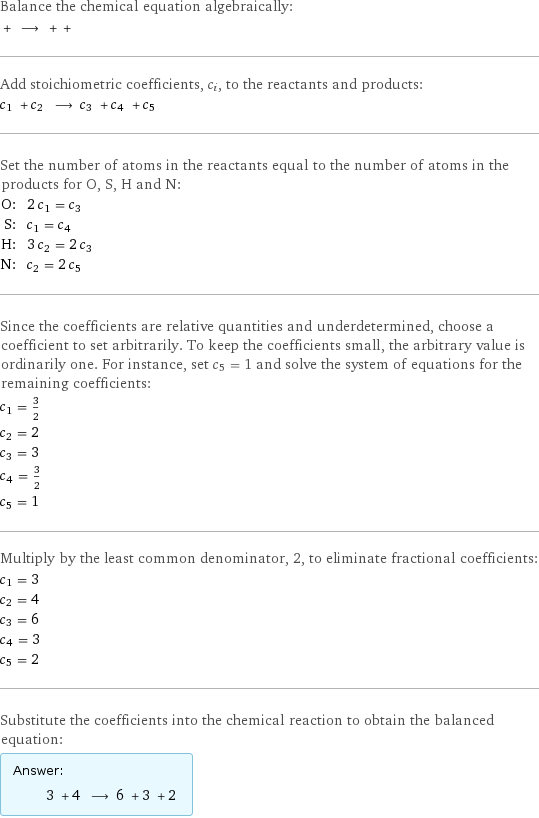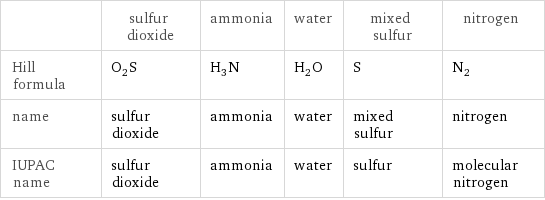Input interpretation

sulfur dioxide + ammonia ⟶ water + mixed sulfur + nitrogen
Balanced equation

Balance the chemical equation algebraically: + ⟶ + + Add stoichiometric coefficients, c_i, to the reactants and products: c_1 + c_2 ⟶ c_3 + c_4 + c_5 Set the number of atoms in the reactants equal to the number of atoms in the products for O, S, H and N: O: | 2 c_1 = c_3 S: | c_1 = c_4 H: | 3 c_2 = 2 c_3 N: | c_2 = 2 c_5 Since the coefficients are relative quantities and underdetermined, choose a coefficient to set arbitrarily. To keep the coefficients small, the arbitrary value is ordinarily one. For instance, set c_5 = 1 and solve the system of equations for the remaining coefficients: c_1 = 3/2 c_2 = 2 c_3 = 3 c_4 = 3/2 c_5 = 1 Multiply by the least common denominator, 2, to eliminate fractional coefficients: c_1 = 3 c_2 = 4 c_3 = 6 c_4 = 3 c_5 = 2 Substitute the coefficients into the chemical reaction to obtain the balanced equation: Answer: | | 3 + 4 ⟶ 6 + 3 + 2
Structures

+ ⟶ + +
Names

sulfur dioxide + ammonia ⟶ water + mixed sulfur + nitrogen
Chemical names and formulas

| sulfur dioxide | ammonia | water | mixed sulfur | nitrogen Hill formula | O_2S | H_3N | H_2O | S | N_2 name | sulfur dioxide | ammonia | water | mixed sulfur | nitrogen IUPAC name | sulfur dioxide | ammonia | water | sulfur | molecular nitrogen